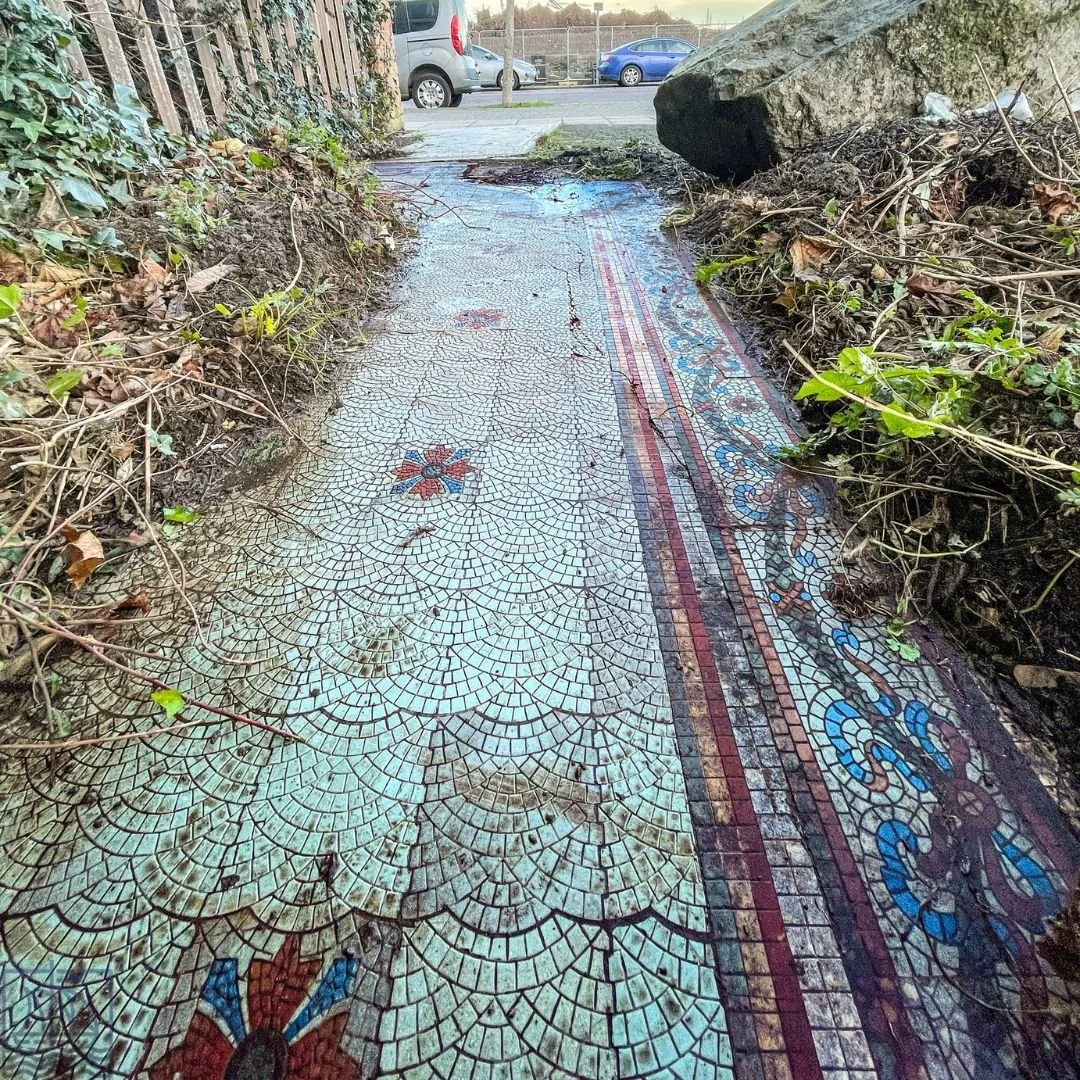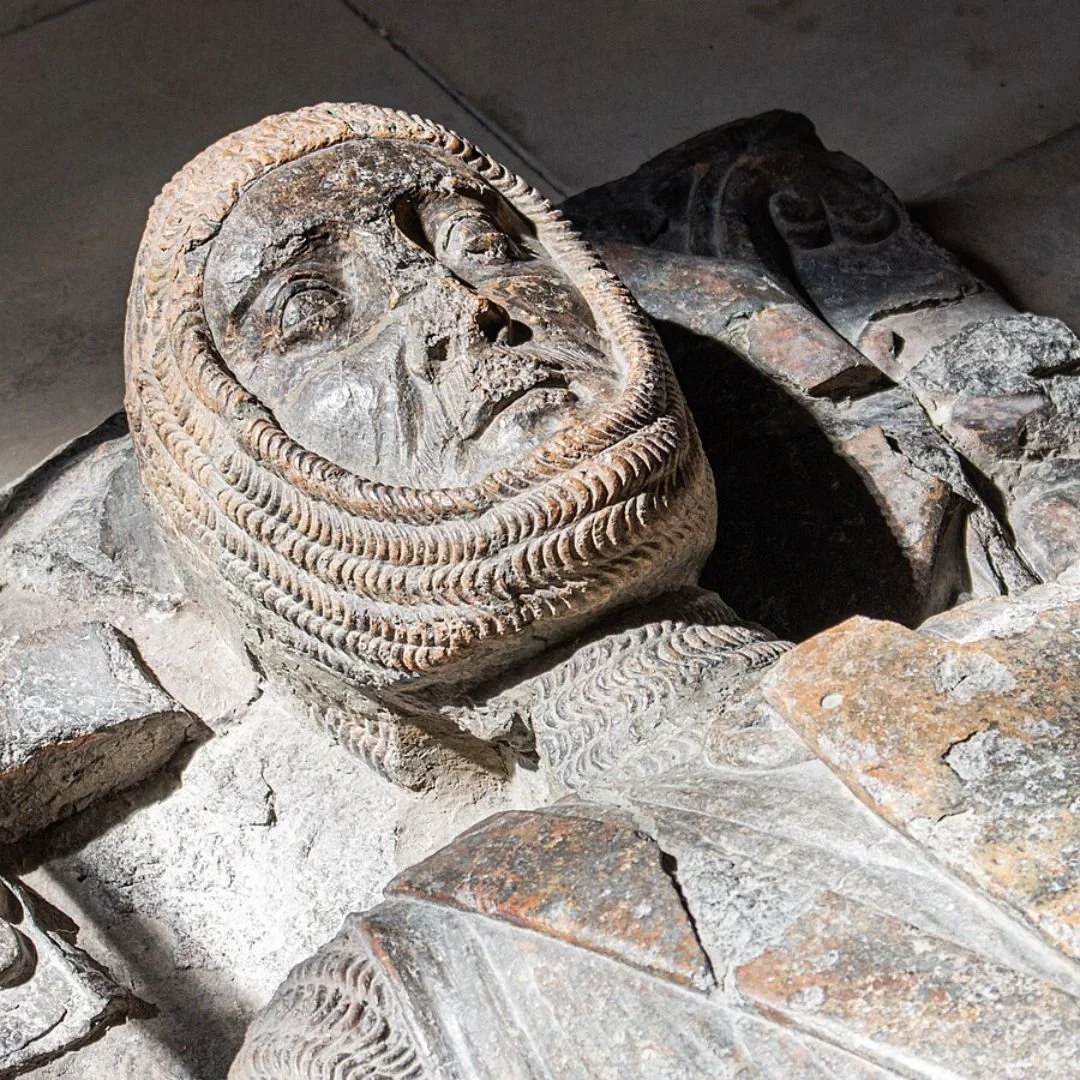Gallos Statue at Tintagel Castle In Cornwall
The imposing Gallos Statue at Tintagel Castle in Cornwall overlooks the Cornish sea.
The impressive 8-foot-tall (2.4 m) bronze sculpture was created by artist Rubin Eynon.
It stands proudly at Tintagel Castle, a medieval fort on the rugged Tintagel Island in North Cornwall, said to be the birthplace of King Arthur.
The castle itself was constructed by Richard, Earl of Cornwall in the 1230s; inspired by the association with Arthur, he had the castle styled to appear older.
The sculpture depicts a ghostly male figure, crowned and gripping a sword, often referred to as the "King Arthur statue."
However, according to English Heritage, which manages the site, Gallos is not meant to represent any specific individual.
Instead, it symbolises the rich, layered history of Tintagel, a place believed to have once served as a summer residence for the kings of Dumnonia.
Gallos was commissioned by English Heritage and took six months to design, sculpt, and cast.
What makes Gallos unique is its partially open design, with gaps that allow viewers to see through the sculpture to the landscape beyond, giving it a ghostly, ethereal appearance.
Since its installation at Tintagel Castle, Gallos has become a popular attraction.
Accessible only by hundreds of steps from the mainland, the statue had to be positioned via helicopter and was unveiled on 29 April 2016, just ahead of the bank holiday weekend.
Installed by English Heritage as part of an enhanced visitor experience, Gallos followed an earlier rock carving of Merlin, which had been criticised by Cornish nationalists and historians for "Disneyfying" the site’s history.
Similar concerns were raised about Gallos as well.
The project also included the installation of a stone compass that points to various Arthurian legend sites across the British Isles, as well as stepping stones in the castle garden that tell the story of Tristan and Iseult.
Information panels were added to provide historical context about the castle.
The materials used in the development, such as bronze and Delabole slate, were chosen to reflect Tintagel’s industrial heritage.
Tintagel Castle ruins that stand today date back to the 13th century, when Richard, Earl of Cornwall, built a medieval fortress on the site.
However, archaeological evidence suggests that Tintagel was of significance long before this, with signs of occupation during the late Roman and early medieval periods.
The site may have once been a stronghold or royal residence for the rulers of Dumnonia, a kingdom that thrived after the Roman withdrawal from Britain.
Tintagel’s mysterious history is intertwined with Arthurian tales, particularly the legend of Arthur's conception, which is said to have occurred here, thanks to the wizard Merlin’s magic.
This association has made the castle a place of pilgrimage for those fascinated by Arthurian myths.
Today, the ruins, along with the surrounding landscape of cliffs and rugged terrain, attract visitors from around the world.
We also highly recommend a visit to the beach below the castle - one of Tintagel's best kept secrets!
In winter, you can blow away the cobwebs with a walk along the shore or stop and admire the waterfall falling onto the sand from the cliffs above.
In summer, children can build sandcastles or explore Merlin's Cave when the tide is out.
Please note that there is no lifeguard service in operation on the beach, and you may wish to check the tide times when planning your visit.
Due to constant natural movement by the sea and tides, the route involves clambering over rocks, so take extra care.
You can book online until 8.45am on the day of your visit via the English Heritage website.
If you're visiting after 2pm, you can book right up to the start of your chosen arrival time.
We recommend prebooking your tickets to Tintagel Castle, as during peak times we can be fully booked.
If you enjoyed this blog post, please follow Exploring GB on Facebook for daily travel content and inspiration.
Don’t forget to check out our latest blog posts below!
Thank you for visiting Exploring GB


















